Photos 3
Maryland site, NC plot
This plot was considerably larger than the 4H one, and it�s incredible that Brian managed to find it, given the stark difference between where we parked and where the birds actually were. The mosses made walking a lot springier�except when we walked on them so often that we started making peat out of them.
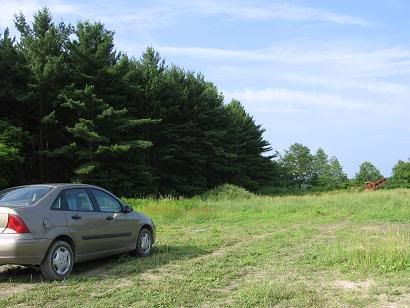
This is our makeshift parking lot. All along the road were vast fields with the occasional hay bale and farm, which is why you would never dream that there was a marsh close by. The area was mined 20 years ago for peat (hence the big orange machine in the background), ruining the soil, but the Nature Conservancy bought the rest that hadn�t been processed yet.
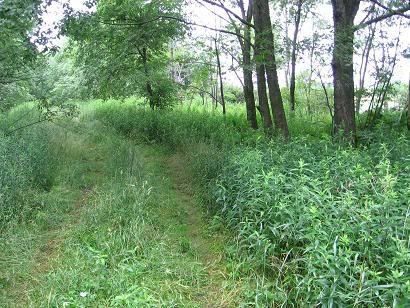
To the right of this photo, part of the mined land was filled with water and turned into a lake in the early stages of succession. In the morning, the resident beaver can be spotted swimming around. On the left is the mud bridge entrance to the forest.

The miners built a channel to control the depth and flow of water in the lake, then added a mud bridge to cross into the forest. Deer and birds and bears leave their tracks here, too.
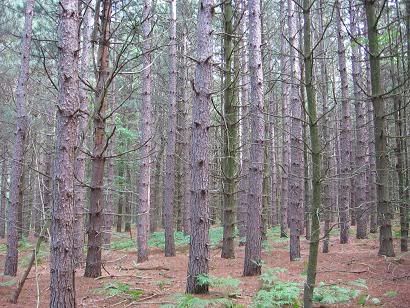
Crossing the bridge means entering a pine tree plantation (unrelated to the mining). It�s really quiet and a little creepy, since every direction looks the same and the trees are planted in straight rows "like an endless Parthenon..." My scant sense of direction got me lost more than once, and I came out of the forest on the wrong side a couple times.
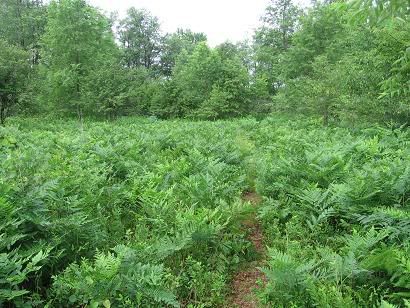
After the plantation is another forest path, after which you finally reach�
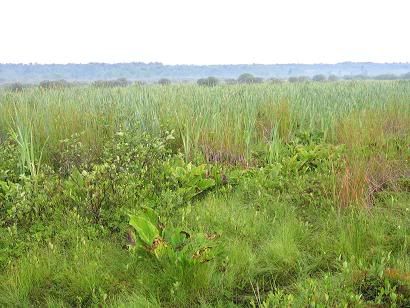
�a huge marsh with some cattails in front, bush after bush of mountain holly (dots in the back), and alders to the side. The big leafy plant in front is skunk cabbage, which bears enjoy and which smells awful if you tear a leaf.
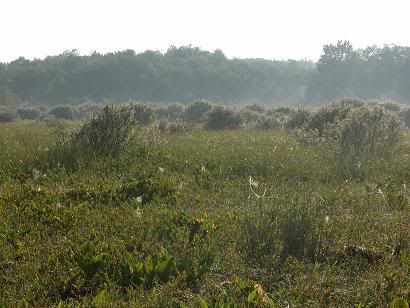
(Photo by Brian) Once again, pre-dawn spider webs galore.
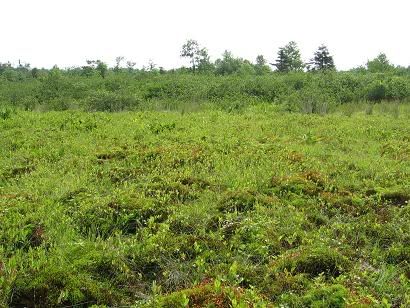
The south side of the plot is the mossiest and springiest. Territories are arranged along the alder stand like little townhouses.
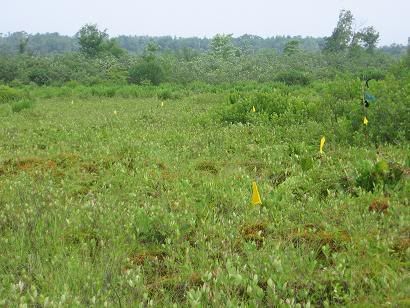
Why look, it's my experiment. The black speaker�s on the right (cleverly camouflaged with a green Giant bag and nestled in a bush), with distance flags flanking it every four meters. I sat 50 feet to the left and played songs through the speaker to gauge the bird�s reaction. This bird had a good one and flew/sang super-close.
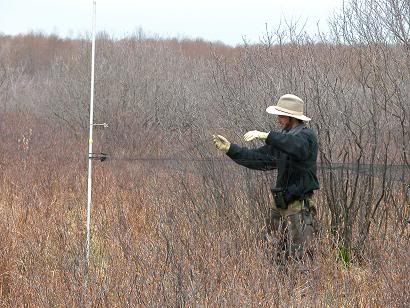
(Photo by Brian) This pic was taken at the way beginning of the season. That�s Joel setting up a mist net to catch and band adult birds. I�ve gotten tangled up in one before.
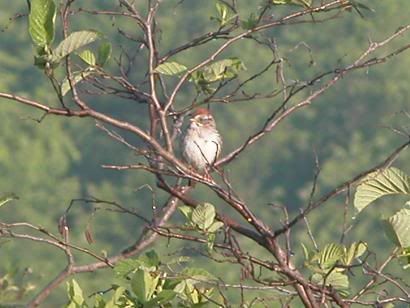
(Photo by Brian) Another plump sparrow. There�s no dimorphism (males and females look the same), so I�m not sure which one this one is. If it opened its mouth and sang, it would be a male and I would yell for it keep singing so I could run a test on it.

Growing on the ground near the front of the plot were blueberries, blackberries and cranberries. The cranberry fruiting season was over, but the blueberries were just ripening and soo good. I bet the bears have gotten to them all by now. *sniff*
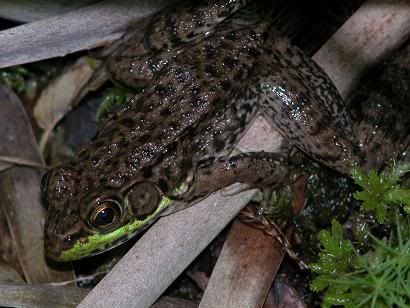
(Photo by Brian) I think this is a green frog? They would bask in pools created by our tire tracks and dive out of sight whenever we approached. Snapping turtles occasionally passed by too.

There were also small mammals, including voles and this baby kangaroo mouse (actual size) that I saw when going into the plot. It wasn't well, though; it was shivering, never opened its eyes, and let me nudge it with a leaf before taking its picture. When I came back out, it was gone. Life and death in thirty minutes.
Delaware photos next!